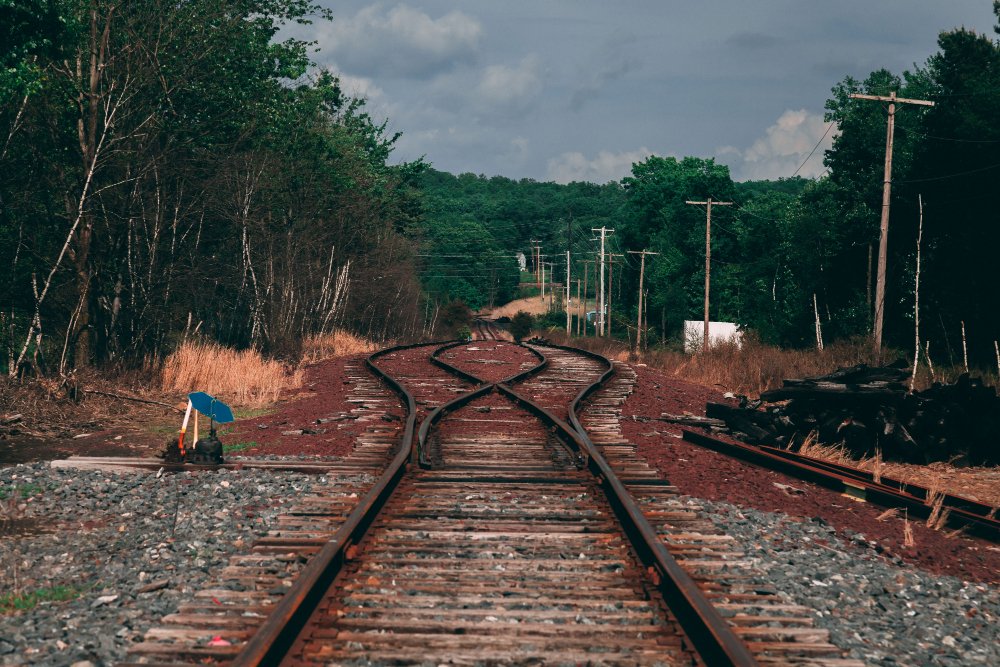Introduction
There is a unique beauty in steel, steam, and speed — and for thousands of railway lovers, that beauty lives forever in rrpicturearchives. This platform has become a digital museum of trains, locomotives, and railroads, curated by passionate railfans who capture history one frame at a time. Whether it’s an old steam engine resting quietly in a yard or a modern high-speed electric gliding across the tracks, rrpicturearchives gives every photograph a permanent home.
For over a decade, rrpicturearchives has served as a cornerstone for the global railway photography community. It bridges the past and present, providing a space where enthusiasts, modelers, historians, and photographers meet to celebrate the world of railways.
In this detailed guide, we’ll explore the story, purpose, structure, and importance of rrpicturearchives — and how it contributes to preserving the rich heritage of rail transport.
What Is rrpicturearchives?
At its core, rrpicturearchives (Railroad Picture Archives) is a user-driven online platform created to document and share photographs of trains, locomotives, rolling stock, stations, and railroads. The platform allows contributors from around the world to upload their own images, categorize them, and build personal collections.
Unlike casual photo sites, rrpicturearchives focuses exclusively on the rail domain — giving users detailed tools to classify images by locomotive number, railroad company, model type, and even build year. Each photograph becomes a data point in an immense visual database that railway historians and enthusiasts rely upon.
Think of rrpicturearchives as the “Wikipedia of train photography,” but with the emotional value of personal memory. Every photo uploaded has a story — a quiet morning at a yard, a rare locomotive captured during its last run, or a childhood trip revisited through a lens.
A Brief History of rrpicturearchives
The birth of rrpicturearchives came from one simple passion — the love of trains. Long before digital photography became mainstream, railfans would gather near crossings and yards, waiting for a glimpse of locomotives. With time, these photos filled drawers and albums, fading with age. The creators of rrpicturearchives realized that the internet could serve as a permanent home for such memories.
By the early 2000s, rrpicturearchives had already established itself as one of the earliest and most organized digital repositories for railroad images. Contributors began adding not only photographs but also metadata: engine numbers, locations, dates, and notes about the condition or modifications of trains.
This attention to detail turned rrpicturearchives into more than just a photo site — it became a living historical record.
Today, even though many new photo platforms exist, rrpicturearchives remains a timeless favorite among serious rail photographers because of its structure, reliability, and dedication to accuracy.
Purpose and Vision
The vision behind rrpicturearchives is both simple and profound — to preserve and share the visual history of railroads for generations to come.
Every locomotive tells a story. From the first iron giants of the 1800s to the sleek bullet trains of the modern era, trains reflect the evolution of engineering and human progress. Without platforms like rrpicturearchives, much of that visual heritage could disappear into forgotten archives or hard drives.
The site provides:
-
Historical preservation: Thousands of photographs documenting different rail eras.
-
Community contribution: Users actively add new photos daily.
-
Educational value: Students, researchers, and model train builders reference images for projects and restorations.
-
Personal passion: For many users, rrpicturearchives is a lifelong hobby — a digital reflection of years spent chasing locomotives across landscapes.
Structure and Features of rrpicturearchives
1. User Accounts and Collections
Users can create personal profiles, build albums, and manage categorized photo sets. These collections might be based on railroads (e.g., Union Pacific, Amtrak, BNSF), locomotive models (e.g., SD70ACe, GP38-2), or geographical regions.
2. Locomotive Information
One standout feature of rrpicturearchives is its structured data. Each locomotive entry can include:
-
Model and builder
-
Serial number
-
Date built
-
Railroad ownership history
-
Current status (active, retired, scrapped)
This transforms each image from a simple photo into a verified record.
3. Search and Navigation
Users can search by locomotive number, photographer, date, railroad, or location. This precision helps historians and modelers find reference material quickly.
4. Community Interaction
While rrpicturearchives isn’t a social media site in the modern sense, it fosters connection. Photographers admire each other’s work, identify locomotives together, and sometimes help fill in missing details for old units.
5. Archival Quality
Most uploads on rrpicturearchives are accompanied by metadata. Over the years, this consistency has made it one of the cleanest and most reliable datasets in the railfan world.
Why rrpicturearchives Matters
The value of rrpicturearchives extends far beyond hobby photography. It acts as an educational and documentary tool for:
1. Railway Historians
Researchers studying railway development often rely on visual documentation. By browsing the archives, they can trace the transformation of locomotives, branding, or infrastructure.
2. Model Train Builders
Modelers depend on rrpicturearchives to get accurate paint schemes, numbering styles, and car details for their miniature replicas.
3. Museum Curators
Preservation groups and museums use rrpicturearchives images to restore locomotives accurately — down to color shades, logos, and small fittings.
4. Transportation Students
Engineering and transportation students use the platform to study the evolution of designs and rail logistics.
5. Everyday Enthusiasts
And finally, countless railfans simply browse rrpicturearchives for joy — reliving moments from their travels or spotting rare locomotives from the past.
The Spirit of the Railfan Community
To understand rrpicturearchives, you must understand railfans. These are individuals driven by passion, not fame or profit. They wake up early, track train schedules, and stand under the blazing sun or rain just to capture a fleeting moment — a locomotive rushing by.
rrpicturearchives celebrates that dedication. Every photo uploaded carries the soul of its photographer — someone who waited, framed, and clicked at just the right second.
For many, uploading to rrpicturearchives is like donating to a museum — a way of saying, “I was there, and this moment matters.”
Preserving History Digitally
Railroads are constantly evolving — engines are repainted, renumbered, retired, or scrapped. Without documentation, these transitions fade into obscurity. rrpicturearchives plays the role of a digital historian, capturing every phase of a locomotive’s life.
For example, a diesel unit built in 1975 may have changed ownership several times, been rebuilt, and finally retired in 2020. By tracking its photos through rrpicturearchives, users can trace that journey visually.
This continuity makes the archive invaluable for future generations seeking authentic records.
Comparison with Other Platforms
While modern platforms like Flickr, Instagram, and Railpictures.net also host train photos, rrpicturearchives maintains a specialized niche:
| Feature | rrpicturearchives | Other Photo Platforms |
|---|---|---|
| Focus | Railways only | Mixed content |
| Data Structure | Highly detailed locomotive metadata | Minimal metadata |
| Longevity | Historical and archival | Trend-based |
| Community | Rail historians and enthusiasts | General public |
| Educational Use | Strong | Limited |
This focus allows rrpicturearchives to stand apart as a professional yet community-friendly environment for serious rail enthusiasts.
The Evolution of Train Photography
To appreciate rrpicturearchives, it’s important to look at the evolution of railway photography itself.
Early Days
In the 19th century, photographers used bulky cameras to capture the majesty of steam engines. These images, often black and white, documented industrial progress.
The Film Era
By the mid-20th century, railfans with 35mm cameras began documenting trains as both art and history. The color era brought vibrant diesel and electric locomotives to life.
The Digital Revolution
The arrival of digital cameras and smartphones revolutionized train photography. With platforms like rrpicturearchives, photographers could instantly share and preserve their work globally.
Today, rrpicturearchives hosts a mix of scanned film images and digital photos — creating a continuous visual lineage from the past to the present.
Behind Every Image: Data and Dedication
Each photo in rrpicturearchives is more than pixels; it’s structured information. Contributors spend hours adding data, researching locomotive serials, verifying railroad names, and updating statuses.
This meticulous effort has transformed rrpicturearchives into one of the largest volunteer-driven rail data systems in the world.
A typical entry might look like this:
-
Locomotive: BNSF 7143
-
Model: GE ES44C4
-
Date Built: 2014
-
Photographer: John Doe
-
Location: Kansas City, MO
-
Notes: Leading a mixed freight under cloudy skies.
Such precision ensures that anyone studying American railroads can rely on rrpicturearchives as a factual resource.
The Emotional Connection
Beyond information, rrpicturearchives is an emotional archive. Many users upload pictures of trains that no longer exist — engines scrapped, lines abandoned, or liveries discontinued. Viewing these photos becomes a nostalgic journey through time.
For older photographers, rrpicturearchives offers a place to preserve a lifetime’s work. For younger fans, it’s an educational gateway into railway heritage.
Every image whispers a story — the whistle of a departing train, the rumble of steel on tracks, the golden light of sunset over a yard. Through rrpicturearchives, those stories never fade.
How to Contribute
Becoming part of rrpicturearchives is both simple and rewarding.
-
Create an account: Register and verify your profile.
-
Upload images: Ensure your photos are original and well-labeled.
-
Add metadata: Include locomotive number, date, railroad, and location.
-
Follow guidelines: Respect copyright and maintain clarity.
-
Engage: Browse others’ galleries, comment, and contribute corrections.
By following these steps, new members help strengthen the accuracy and richness of rrpicture archives.
Educational and Research Applications
Educators often use rrpicture archives to bring lessons to life. For instance:
-
History teachers illustrate industrialization with locomotive images.
-
Engineering students analyze mechanical evolution.
-
Geography students study rail networks through photo locations.
-
Designers refer to color schemes and branding transitions.
This multi-disciplinary utility has quietly turned rrpicture archives into a valuable educational resource.
Challenges Faced by rrpicture archives
Like all volunteer-driven platforms, rrpicture archives faces several challenges:
-
Data verification: Ensuring accuracy among thousands of uploads.
-
Copyright issues: Respecting photographer rights while allowing sharing.
-
Technological upkeep: Maintaining servers and interface over time.
-
Modern competition: Adapting to newer, flashier media platforms.
Yet, its loyal community continues to sustain it through dedication and love for the rails.
Future of rrpicture archives
The future of rrpicture archives lies in modernization without losing its archival soul. Possible developments include:
-
Cloud integration: Safer and faster storage.
-
Mobile accessibility: Easier uploads from phones.
-
AI-based tagging: Automatic recognition of locomotive types.
-
Educational collaborations: Linking archives with universities and museums.
Such innovations would ensure that rrpicture archives continues to thrive as both a community and an archive.
rrpicture archives in the Era of AI and Digital Memory
With AI now capable of recognizing trains and predicting models, rrpicture archives could serve as a perfect dataset for machine learning applications in transportation studies. Researchers could train algorithms on labeled photos to identify locomotives automatically or estimate their build years from visual patterns.
However, the human element — the heart of rrpicture archives — will always be irreplaceable. The love, patience, and story behind every photograph cannot be generated by a machine.
Conclusion
In the noisy, fast-scrolling digital world, rrpicturearchives stands as a quiet monument — a gallery of iron giants and steel memories. It is more than a website; it’s a collective diary of train enthusiasts across decades.
By combining data precision, community passion, and historical preservation, rrpicture archives continues to capture what makes railways so enduringly fascinating — their motion, their sound, and their soul.
For every whistle that once echoed and every track that led somewhere unknown, rrpicture archives ensures that the journey never truly ends.


